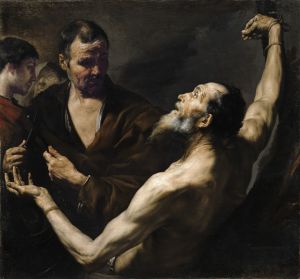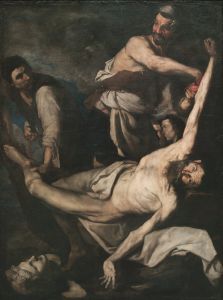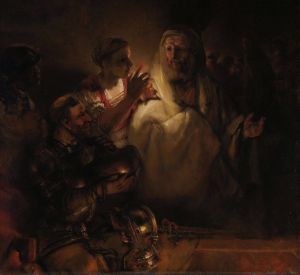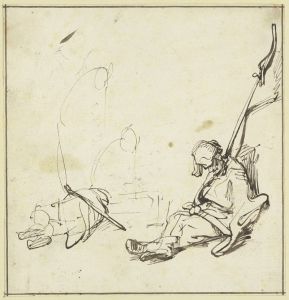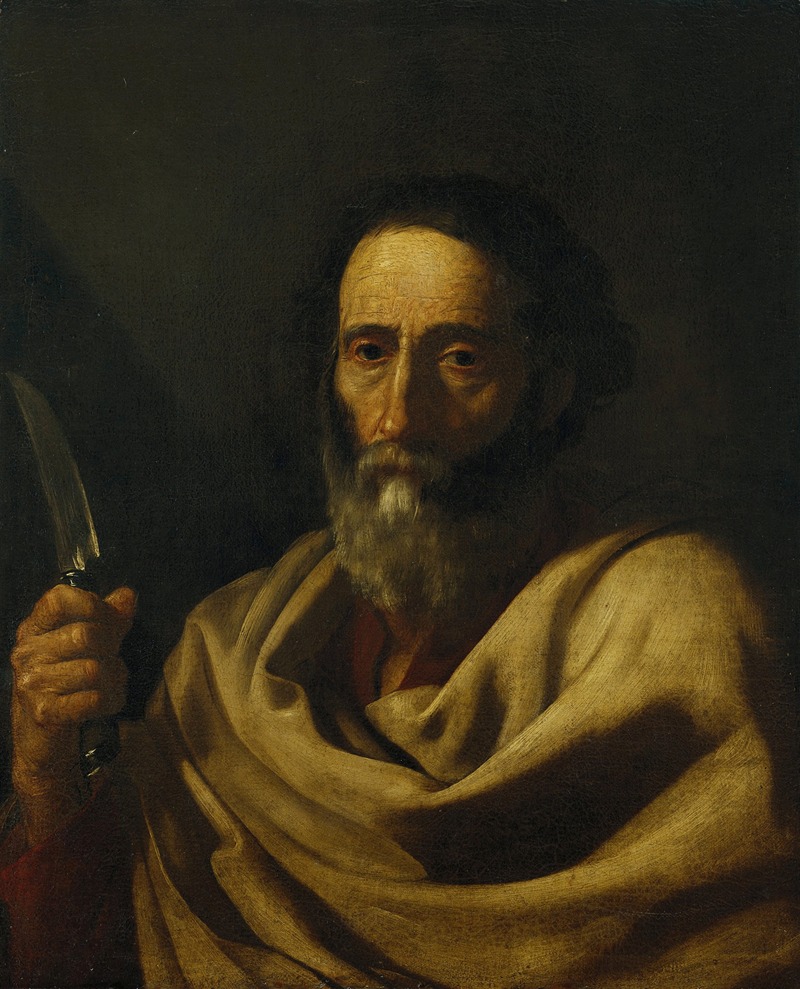
Saint Bartholomew
A hand-painted replica of Jusepe de Ribera’s masterpiece Saint Bartholomew, meticulously crafted by professional artists to capture the true essence of the original. Each piece is created with museum-quality canvas and rare mineral pigments, carefully painted by experienced artists with delicate brushstrokes and rich, layered colors to perfectly recreate the texture of the original artwork. Unlike machine-printed reproductions, this hand-painted version brings the painting to life, infused with the artist’s emotions and skill in every stroke. Whether for personal collection or home decoration, it instantly elevates the artistic atmosphere of any space.
Jusepe de Ribera, a prominent Spanish painter of the Baroque period, is renowned for his intense and realistic depictions of religious subjects. One of his notable works is "Saint Bartholomew," a painting that exemplifies Ribera's mastery in capturing human emotion and physicality. Created in the early 17th century, this artwork is a testament to Ribera's skill in using chiaroscuro to enhance the dramatic effect of his compositions.
"Saint Bartholomew" portrays the apostle Bartholomew, who, according to Christian tradition, was martyred by being flayed alive. Ribera's depiction is both vivid and poignant, capturing the saint at a moment of profound suffering and spiritual transcendence. The painting is characterized by its stark realism and the meticulous attention to detail, particularly in the rendering of the human form and the textures of skin and fabric.
Ribera's use of light and shadow in "Saint Bartholomew" is particularly noteworthy. The strong contrasts between light and dark areas not only highlight the physicality of the figure but also serve to underscore the emotional intensity of the scene. The light falls dramatically on the saint's face and upper body, drawing the viewer's attention to his expression and the tension in his muscles. This technique, known as tenebrism, was a hallmark of Ribera's style and contributed to the emotional impact of his work.
The painting reflects Ribera's deep understanding of human anatomy, likely influenced by his studies in Italy, where he was exposed to the works of Caravaggio and other masters of the Baroque era. Ribera's ability to convey the physical and emotional state of his subjects with such precision and empathy is a defining feature of his oeuvre.
"Saint Bartholomew" is also significant for its exploration of themes of martyrdom and faith. The painting invites viewers to contemplate the saint's suffering and his unwavering devotion, offering a powerful meditation on the nature of sacrifice and redemption. Ribera's portrayal of Bartholomew is both a tribute to the saint's steadfast faith and a reflection of the artist's own interest in the human condition.
This work is part of a broader series of paintings by Ribera that depict the apostles and other religious figures, each rendered with a similar focus on realism and emotional depth. These paintings were highly regarded in Ribera's time and continue to be celebrated for their technical brilliance and psychological insight.
Today, "Saint Bartholomew" is housed in the Prado Museum in Madrid, where it remains an important example of Ribera's contribution to Baroque art. The painting is admired not only for its artistic qualities but also for its ability to engage viewers with its compelling portrayal of a moment of intense spiritual and physical trial.
In summary, Jusepe de Ribera's "Saint Bartholomew" is a masterful work that exemplifies the artist's skill in combining dramatic realism with profound emotional and spiritual themes. Through his expert use of light, shadow, and anatomical detail, Ribera creates a powerful image that continues to resonate with audiences today.






